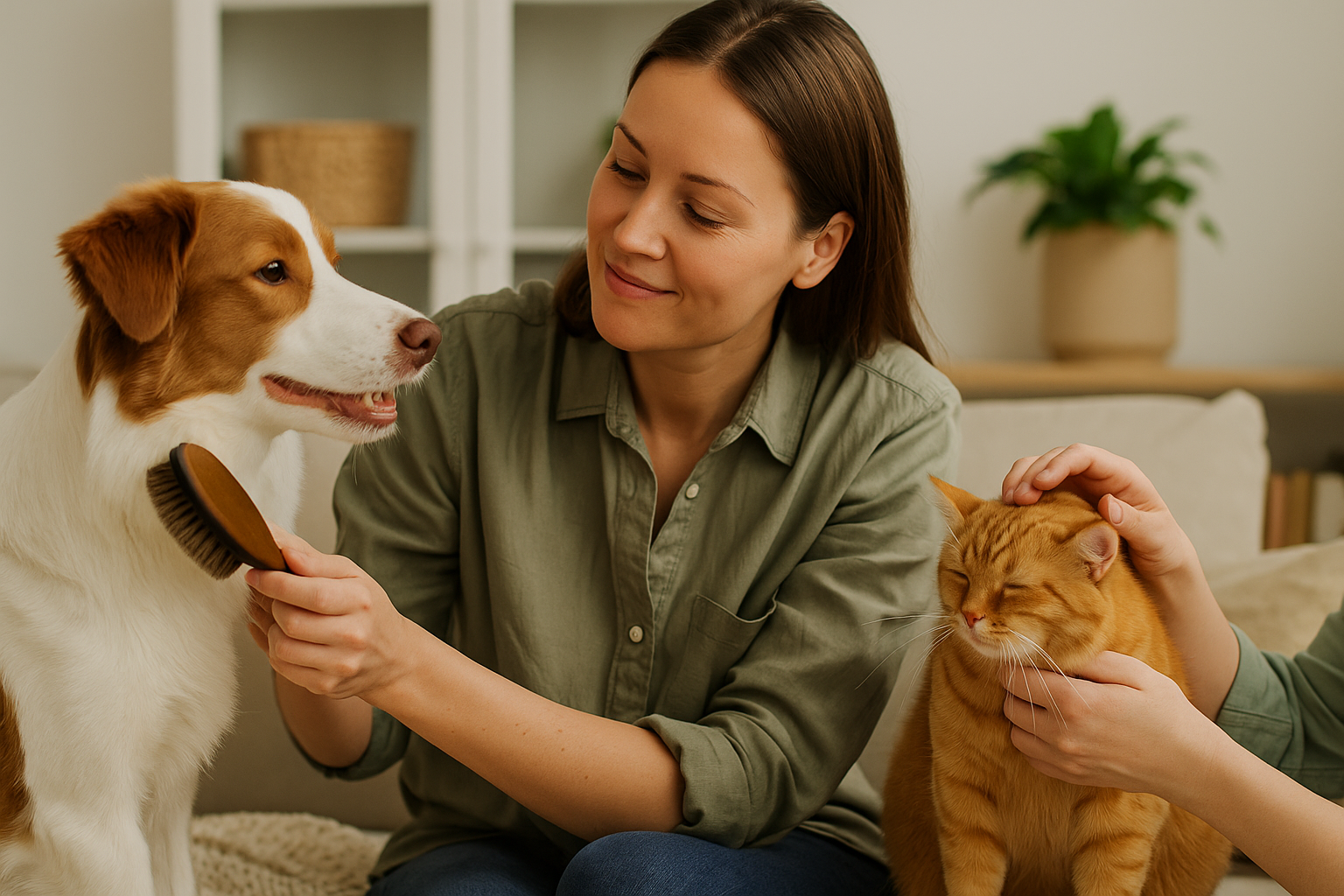Many people think that dogs and cats show affection only by wagging their tails or rubbing against our legs. In reality, these animals have a language full of behaviors that go beyond what we see. Our furry friends use movements, looks, postures, and even soft sounds to communicate what they are feeling.
Learning to notice these small daily signals opens the door to a much stronger and more harmonious bond.
1. The Silent Conversation of Daily Life
You don’t need words to know how your pet feels. Every day, your animal sends many messages: an excited jump at the door, a quiet look in the corner, or a comfy stretch over your feet. These gestures are invitations; some mean “come closer,” while others signal “I need space now.”
The real challenge is paying enough attention to respond in the way your pet needs.
2. Interpreting Dog Signals Beyond the Obvious
Wagging tails are famous, but they don’t always mean happiness.
If your dog’s entire body wags and its tail moves quickly and widely, that generally means joy.
A slow tail movement may indicate doubt or caution.
Raised ears and a relaxed face mean interest or calmness.
Flattened ears, a frozen body, or the tail tucked between the legs show fear, worry, or even a plea for reassurance.
Even something simple, like a big yawn, can hint at stress, especially in new situations.
3. Decoding Cat Behavior and Signals
If you want to understand a cat, observe how it holds its tail and positions its ears.
Tail up and ears forward? Confident and comfortable.
Tail low or flicking? Alert, uncomfortable, or even annoyed.
Flattened ears mean it’s best to give space.
A soft purring while near you is gentle approval; but purring at the vet’s office might be self-soothing under stress.
If your cat blinks slowly at you, respond—it’s their way of showing trust.
Cats prefer subtlety. Let them approach you and respect when they decide to walk away.
4. The Ideal Way to Show Affection
No two animals like the same type of touch.
Dogs often love soft rubs on the chest, chin, or behind the ears.
Many cats melt for gentle scratches under the chin or on the top of the head.
Very few animals enjoy their belly being touched unless they roll over and show clear signs of trust.
Always watch for their permission—leaning in, closing their eyes, or soft purring.
5. Respecting Boundaries Is Real Love
Healthy relationships come from knowing when to stop. If a pet walks away, stiffens up, or turns its head, that’s a “no.”
Backing off in these moments builds confidence. Listening to your pet’s limits is the highest form of affection.
6. Eye Contact: The Subtle Messenger
Direct eye contact means different things:
Soft, gentle gazing shows love to both cats and dogs.
Hard staring can feel threatening or stressful—avoid it.
For cats especially, a slow blink exchanged with their human is a powerful moment of connection. Try it and notice their relaxed reply.
7. What Each Sound Says
Dogs express themselves with short, sharp barks when happy and deeper tones when defending the home. Whines and little “talks” ask for comfort or attention.
Cats meow to communicate with humans—quick meows say hello, long meows ask for food or services, and contented purrs mean they’re pleased.
8. Playful Actions and Emotional Health
Playing isn’t just about burning off energy.
A dog’s request for fetch or tug-of-war is an invitation to bond.
A cat’s “attack” on a feather or chase after a rolling toy is normal, healthy, and a form of interaction.
Adapting games to age and health creates joy and trust for both.
9. Adapting Affection to the Moment
Every animal has days when they want to play and days when rest is best.
Calm, anxious, or just waking up—respect the mood. The best affection is the kind your pet asks for, not what we imagine they want.
10. Building a Connection That Lasts
Tiny daily moments—matching your tone to your pet’s comfort, stopping a game when they seem tired, celebrating a slow blink—build deep loyalty over time.
The more you notice and respond to their language, the more peaceful, loving, and balanced your home will be.
For Your Reflection:
Animals give us the chance to practice patience and empathy every day. Pay attention, respect what your four-legged friend is really saying, and you’ll not only meet their needs—you’ll build a friendship richer than any words can express. What signal will you look for next from your companion?
